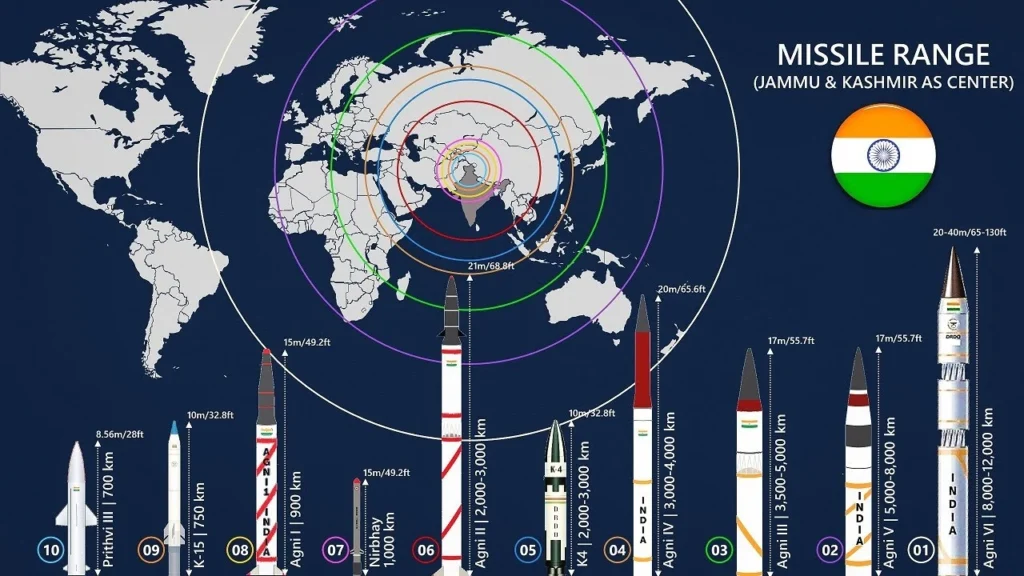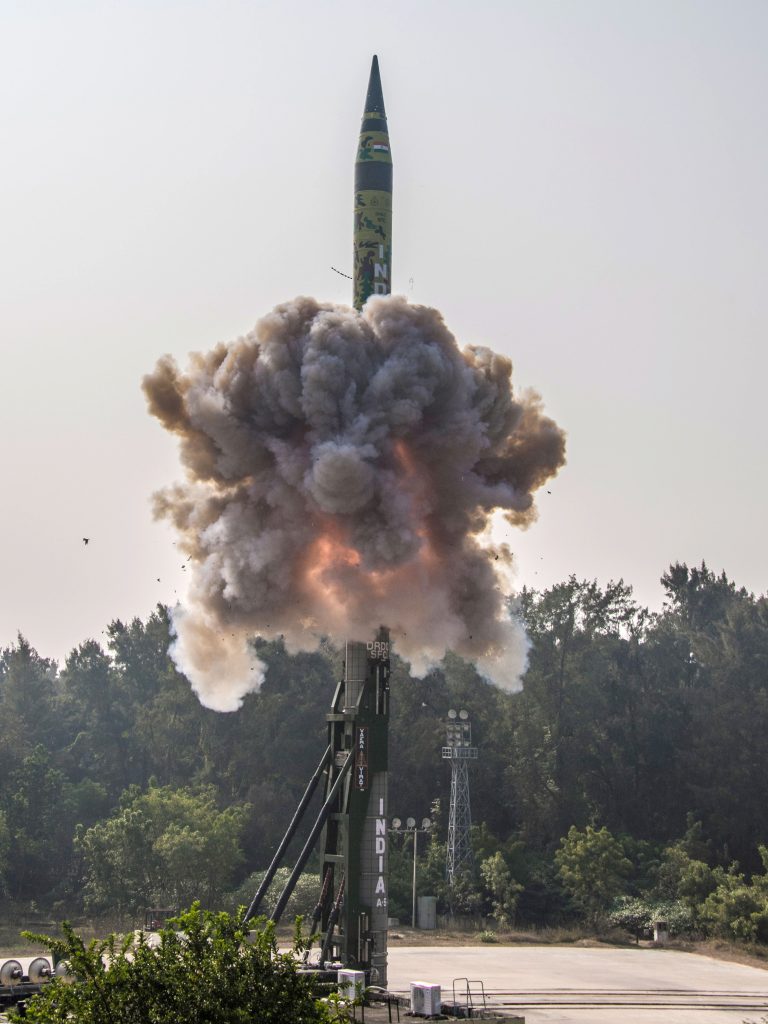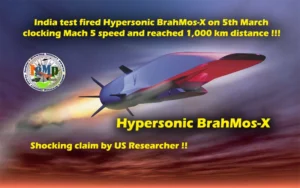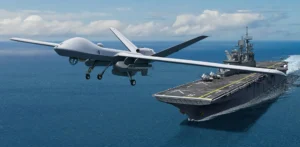Source : IgMp Bureau

Agni-VI or Surya ICBM can become a Force Multiplier for India; Know why
Since its inaugural flight in April 2012, India’s Agni-V ICBM (Intercontinental-Range Ballistic Missile) has successfully completed nine trials. On December 15, 2022, India conducted a night trial of the Agni-V missile from Abdul Kalam Island in Odisha to validate new weapon technology and equipment.
The Agni-V missile underwent a significant transformation, shedding 20% of its weight through the substitution of maraging steel with lightweight composite materials. The launch also showcased its remarkable capability, extending beyond 7,000 kilometers. Nonetheless, due to its limited payload capacity of 1.5 tonnes, Agni-V falls short of establishing a robust Indian credible nuclear deterrence against China. Consequently, India’s integrated guided missile development program must aim higher.
Concurrently, Indian scientists and engineers are diligently working on a satellite launch vehicle (SLV) named ‘DRDO Veda’ (Vehicle for Defence Application). DRDO Veda is set to empower all three branches of the Indian armed forces to launch military satellites into low Earth orbit expeditiously, thereby reducing their reliance on ISRO and reinforcing their self-sufficiency objectives.
A distinguishing feature of DRDO Veda is its use of horizontal stacking for stages and payloads, a departure from ISRO’s vertical stacking process with SSLV rockets. This vehicle will exhibit exceptional agility and mobility, being launchable from a multi-axle TEL (Transporter Erector-Launcher) vehicle.
Legacy of Agni-V ICBM
Despite the successful flights of the Agni-V nuclear-capable intercontinental ballistic missile (ICBM) since 2012, progress on the long-anticipated Agni-VI missile project has been limited. Following Agni-V’s inaugural trial on April 19, 2012, former DRDO Chairman Dr. Vijay Kumar Saraswat unequivocally stated that India had no intention of discontinuing the Agni missile program and planned to develop more missiles in the Agni series beyond Agni-V.
The Agni-V, with its 1.5-tonne nuclear payload, boasts an effective range of approximately 5,500 kilometers. A fundamental law of physics dictates an inverse relationship between a missile’s weight and its range due to gravitational and momentum considerations. According to this principle, Agni-V already possesses the characteristics of a 10,000 km-class ICBM, albeit with a less potent warhead. Addressing this deficiency is a primary objective of the Agni-VI program, which is projected to offer a range of 9,000 to 12,000 kilometers with a 3-tonne nuclear payload, or a range of 14,000 to 16,000 kilometers with a smaller 1.5-tonne package. Agni-VI’s guidance system is anticipated to incorporate an inertial navigation system with a Ring laser gyroscope, complemented by IRNSS (Indian Regional Navigation Satellite System), and terminal guidance possibly enhanced by radar scene correlation for heightened missile accuracy.
Strong Case for Agni-VI
Pradeep Vasant Naik, former Chief of Air Staff of the Indian Air Force and Chairman of the Chiefs of Staff Committee, passionately advocated in 2011 for expanding India’s nuclear striking capabilities beyond its immediate vicinity. The increased range of Agni-VI will bring at least four major world capitals within India’s strike envelope, enhancing India’s flexibility for effective deterrence and allowing for targeting of Chinese ballistic missile submarines (SSBNs), aircraft carriers, and warships concealed in distant waters such as the Southern Indian Ocean and Central Pacific Ocean.
Also Watch: DRDO for the first time reveals the existence of MiRVed Agni-VI ICBM
Agni-VI ICBM as a Huge Force Multiplier
Agni-VI, a solid-fueled multistage intercontinental ballistic missile (ICBM), possesses the capacity to carry up to ten nuclear/thermonuclear warheads in MIRV (Multiple Independent Re-entry Vehicle) and MaRV (Maneuverable Multiple Independent Re-entry Vehicle) variants. The missile may also deploy light decoys and chaffs (radar countermeasures) to outwit even the most formidable anti-ballistic missile systems and confound hostile air defenses.

Given India’s purported arsenal of double-staged thermonuclear fusion devices and single-stage boosted-fission bombs, each MIRV warhead could yield up to 250 kilotons of destructive force, capable of devastating entire metropolitan areas and incinerating millions in a single strike.
Agni-VI, a four-stage composite rocket with a gross weight of up to 70 tonnes, will empower the Indian military to launch military satellites into low Earth orbit (LEO) during contingencies, validating its FOBS (Fractional Orbital Bombardment System) capability. Eminent strategic analysts, including Bharat Karnad, Brahma Chellaney, and Rakesh Krishnan Simha, have consistently argued that India must establish a credible ICBM force in the near future.
“It is past time for India to develop true ICBMs with ranges of 12,000 kilometers or more.” The Agni-VI project should be promptly approved for development. Geopolitical pressures a nation faces are a reflection of its determination and strategic vision. According to Bharat Karnad, an Emeritus Professor for National Security Studies at the Centre for Policy Research and a prominent national security expert, “the current government must demonstrate the resolve to withstand such pressures; otherwise, India will never attain the status of a great power.”
A robust ICBM force comprising Agni-V and Agni-VI missiles will furnish the nation with a formidable security shield on the strategic battlefield, significantly dissuading major powers from attempting to fragment India during future conflicts. While previous governments were perceived as ‘pacifist,’ it is incumbent upon the current administration to expeditiously endorse the Agni-VI program, conduct initial prototypes in the years ahead, and propel India into the exclusive echelon of military superpowers, including the United States, Russia, and China. Such capabilities will endow India with substantial diplomatic leverage on the global stage.

Strategic Prudence
Conducting a full-range Agni-VI test (over 9,000 km) may arouse suspicions in Western media circles. An optimal approach would involve officially declaring the missile’s range as up to 9,000 km (implicitly acknowledging the China factor) while deploying a 3-tonne super heavy warhead. This would validate the missile’s capabilities while avoiding diplomatic tensions with Western nations. Such a test would also provide significant political mileage to the government, as it can be presented as a historic milestone akin to the ASAT test conducted in March 2019.








